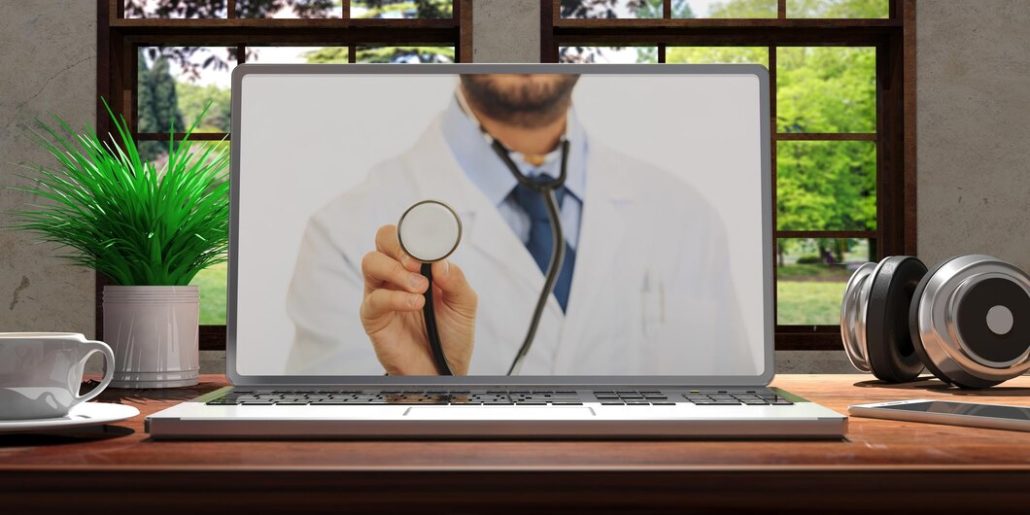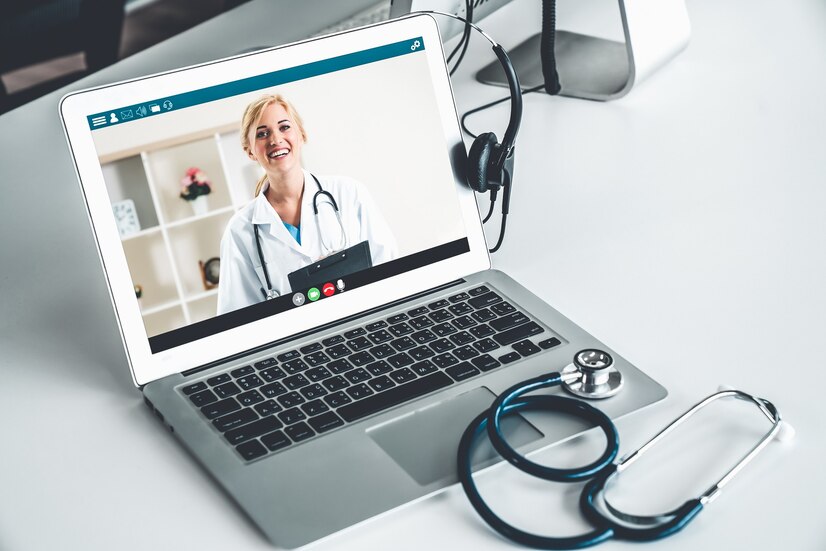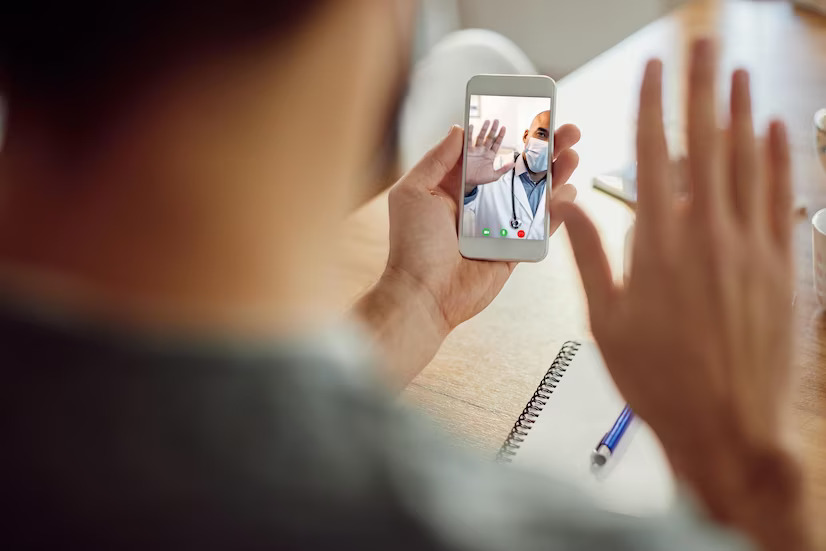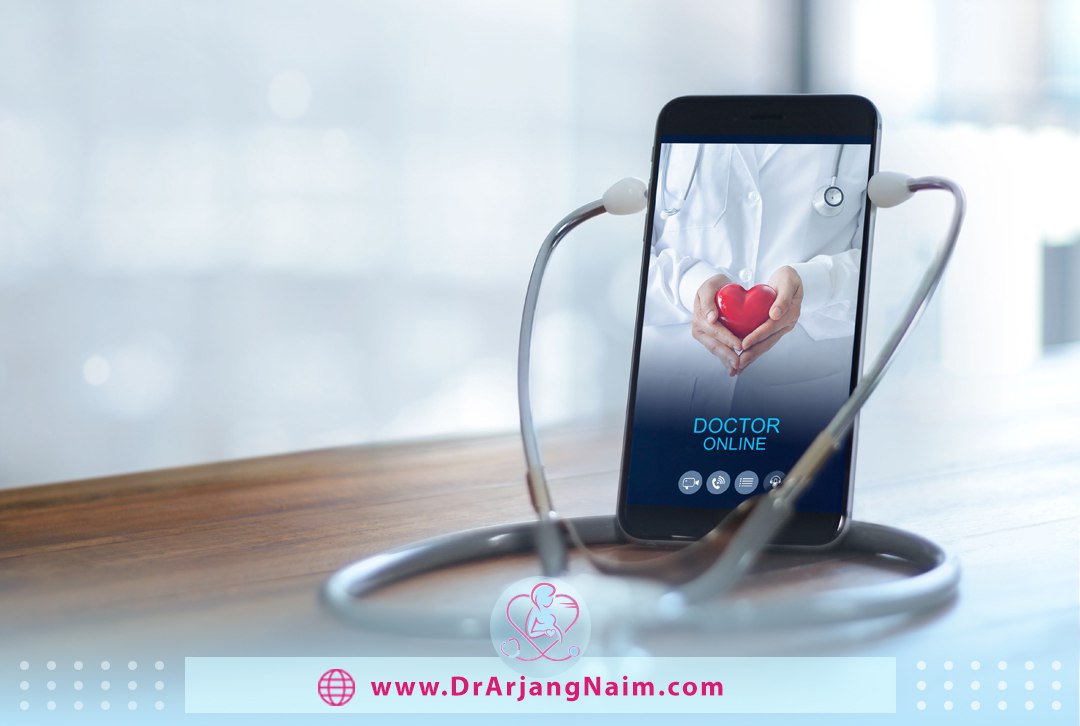Telemedicine
What is the Telemedicine Service?


Telemedicine services
What is telemedicine?
Telemedicine allows you to meet with Dr.Arjang Naim through a secure video conferencing program. You can use your phone, tablet, or computer to access your appointments. You need a private room and a reliable internet connection.

What are the benefits of telehealth?
While telehealth can’t replace in-person or emergency visits, these supplementary appointments with Dr. Naim can help you avoid unnecessary travel. There are many benefits to telehealth over traditional in-person visits, including:
- Access: If you live far from Dr. Naim’s office, traveling several miles in traffic to ask questions regarding your health may not seem feasible for you. Telehealth gives you access to high-quality care no matter where you live.
- Time: It’s difficult to find the time for an in-person visit if you have a busy schedule. With telehealth, you can easily fit your visits with Dr. Naim into your schedule from the comfort of your home or office.
- Transportation: If you’re struggling to find a ride to your doctor’s office, canceling the visit is easy. Thanks to telehealth, you can access the care you need without transportation.
What services are available through telemedicine?

Dr. Arjang Naim, MD provides a wide variety of services through telemedicine. These include:
- Pregnancy monitoring
- Prenatal care
- Virtual consultations
- Prescription refills
- Imaging and lab test reviews
- Contraception counseling
- Infertility counseling
- Menopause management
About Dr.Naim
Arjang Naim is an established and highly skilled physician with over 20 years of experience in obstetrics and gynecology.
He is the best ob-gyn in Los Angeles and surrounding communities. He has been practicing medicine since 2001 from two locations in Los Angeles, an office near Beverly Hills and Beverly center, and the other in Hollywood across from children’s hospitals and Hollywood Presbyterian Medical Center.
After obtaining his Bachelor’s degree from UCLA, he spent four years in New York City to study medicine at the prestigious Mount Sinai School of Medicine. His residency in OB/GYN was at Maimonides Medical Center, which happens to be one of the busiest hospitals in New York.
Dr. Naim’s services in Telemedicine
No matter where you live, you deserve the best health care possible. That’s why Dr. Arjang Naim offers telehealth services that you can access from the comfort of your own home. From contraception consultations to reviews of abnormal lab results,
Dr. Arjang Naim can answer any questions you have while delivering the best care possible. Call or book an appointment online today to schedule a telehealth visit.


What is the difference between Telemedicine and Telehealth
The World Health Organization (WHO) defines telemedicine as ” healing from a distance.” The use of telecommunication and information technology to provide remote clinical services to patients. Doctors use telemedicine to remotely transmit digital imaging, video consultation, and medical diagnosis.
Nowadays, people no longer need to schedule an in-person meeting with a doctor to receive treatment. Using secure audio and video connections makes it possible for doctors to treat patients who live in places with limited access to care.
The terms telemedicine and telehealth cause a lot of debate among people in the healthcare field. One of the reasons for this debate is due to the different definitions of the terms themselves. Some experts consider telemedicine physician-oriented and telehealth to include all health professionals in general.
As medical technology continues to advance, the two terms will likely become more distinct.
3 Myths about Telemedicine
- Only youths are interested in Telemedicine
Telehealth is characterized by using smart technologies and ICT to provide remote health and care services. Hence, many mistakenly assume that such digital services only appeal to tech-savvy youth. However, the telehealth market is much larger than it seems.
Digital apps and platforms are designed with seniors in mind to make digital services more accessible to them. This can increase the interest of the elderly in Telemedicine because they can receive appropriate and efficient care that suits their needs through Telemedicine.

2. Telemedicine is unsafe
There is a perception that Telemedicine is unsafe. But the ways through which Telemedicine is done are safe, and users can rest assured that their data will be protected and managed responsibly.
3. Telemedicine is not as effective as in-person care.
While video consultations offer convenience and doctor-patient interaction, many are skeptical about whether the same quality of care can be replicated online.
Telehealth can contribute to a better patient experience and improve health outcomes, especially for those suffering from chronic conditions or those requiring post-acute care. Integrating remote monitoring and virtual visits into healthcare models means that patients can get the care they need right away if problems arise.
In addition, telehealth services can help improve communication with healthcare providers and ensure better monitoring.
Did you know?
Physicians can resolve their patients’ issues during the initial telemedicine visit, on average, 83% of the time

While some telehealth visits lead to an in-person consultation, especially if the patient is dealing with an urgent medical problem, it appears that most of these issues can be resolved with telemedicine alone. The vast majority of patients using this technology can easily get the care they need just by logging into their computer, smartphone, or tablet.
Customer reviews
Frequently Asked Questions
While there are many other types of telemedicine, the three most common are store-and-forward, telemonitoring, and real-time interactive services.
Medical imaging, remote medical diagnosis and evaluations, video consultations, tele-treatment, and medication management are examples of telemedicine.
Privacy concerns rank high as a barrier to telemedicine adoption. With recent high-profile news stories about healthcare data breaches, patients are concerned that providers are not using appropriate controls to secure the protected health information that they transmit online.
A significant limitation is an inability to perform an in-person physical examination.
Telehealth can increase the communication rate between doctors and their patients, so both parties can access the information they need when they need it most.




